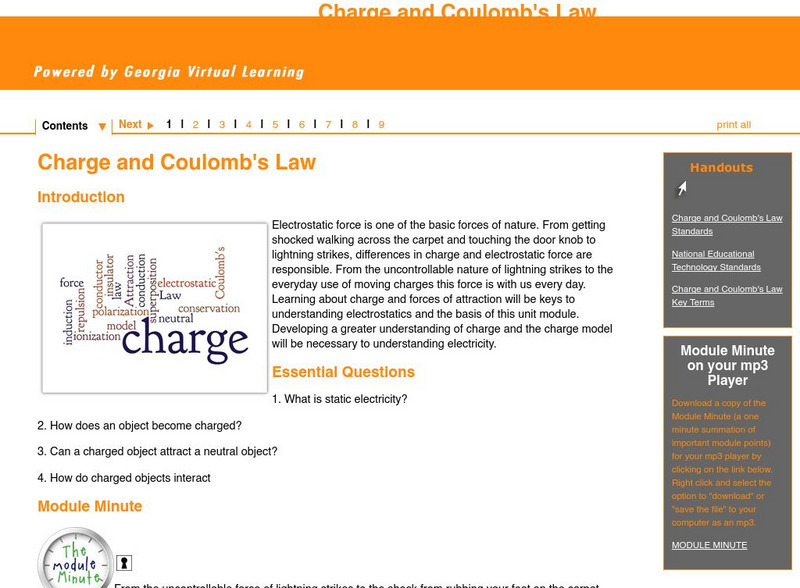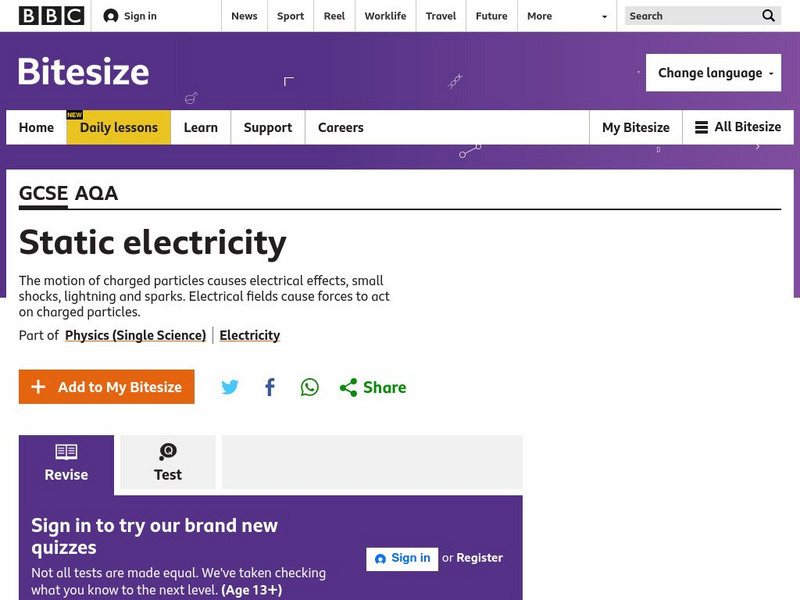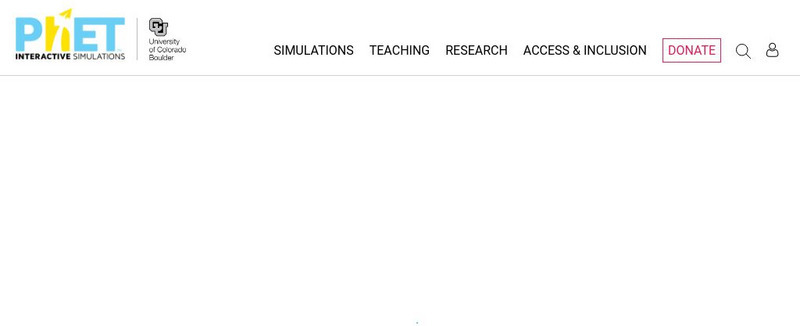Science Matters
Static Electricity
Working with static electricity is sure to give the class a charge! Budding scientists experiment with balloons and different materials to discover how to create static electricity. They learn about the transfer of electrons and the...
Science Matters
Electricity and Magnetism Formative Assessment #1
A formative assessment is a great tool for planning further instruction. The fifth lesson of a 14-part series exploring magnetism and electricity provides questions to gauge current understanding of magnetic fields, compasses, and...
Science Matters
May the Magnetic Force Be with You
Attraction and repulsive forces might seem mysterious to young learners. Have your classes experiment with these forces in the second installment of a 14-part unit on magnetism and electricity. Individuals test different...
Florida State University
Florida State University: Inductance
This article surveys inductance and its different forms. It discusses numerous topics associated with inductance such as Faraday's Law, self and mutual inductance, inductors, and magnetic field lines.
Georgia Department of Education
Ga Virtual Learning: Charge and Coulomb's Law
Learning about charge and forces of attraction will be keys to understanding electrostatics and the basis of this learning unit. Developing a greater understanding of charge and the charge model is necessary to understanding electricity.
BBC
Bbc: Gcse Bitesize: Static Electricity
This lesson focuses on static electricity, including how particles can be charged by friction, and electrical forces and why they repel or attract each other. Includes a link to a test.
Other
Magnet Man: Cool Experiments With Magnets
Here is a lengthy listing of activities and resources pertaining to magnets and magnetism. Experiments which can be performed with many different types of magnets are described; detailed directions and photos are provided.
Concord Consortium
The Concord Consortium: What Are Some Patterns in How Things Stick Together or Push Apart?
In this learning module from The Concord Consortium, students will start to develop their own computer simulation models of how attraction and repulsion between charged objects work.
McREL International
Mc Rel: Whelmer #31 Activity: Static Charged 2x4s
A simple activity that investigates the basic principles behind static electricity. The activity is in lesson plan format that meets NSES standards.
University of Colorado
University of Colorado: Ph Et Interactive Simulations: John Travoltage
See how electrons build up and are discharged as static electricity.
ClassFlow
Class Flow: Magnets and Springs
[Free Registration/Login Required] This unit gives children experience of forces including attraction and repulsion between magnets, compression and stretching of springs, and stretching of elastic bands. They learn that these forces...
Science and Mathematics Initiative for Learning Enhancement (SMILE)
Smile: Introduction to Magnets (Classroom Unit)
A teacher unit which includes several hands-on activities about types of magnets, magnetism, and electrostatics. An activity designed to suit all grade levels. Many parts of the activity would be easily adaptable as a student project.









